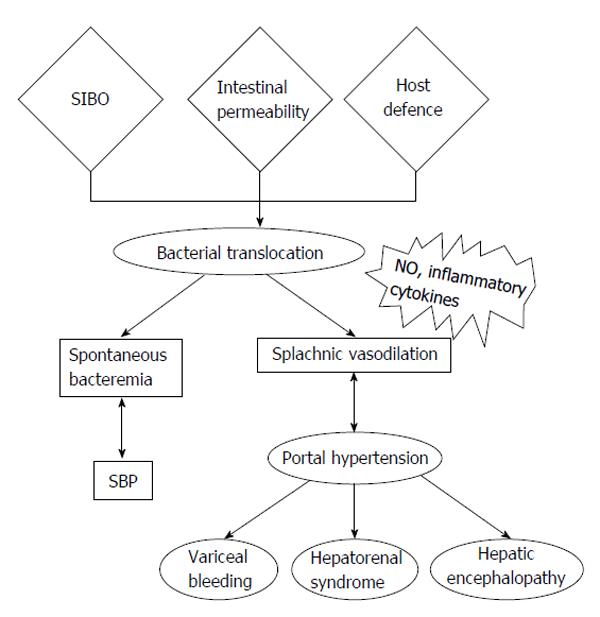Copyright
©The Author(s) 2015.
World J Hepatol. Sep 18, 2015; 7(20): 2264-2273
Published online Sep 18, 2015. doi: 10.4254/wjh.v7.i20.2264
Published online Sep 18, 2015. doi: 10.4254/wjh.v7.i20.2264
Figure 1 The main three mechanisms involved in bacterial translocation include intestinal bacterial overgrowth, increased intestinal permeability to bacteria and an impaired host defence.
BT is considered the key step in the pathogenesis of bacteremia and SBP in cirrhotic patients, as well as a critical factor that triggers host immune responses and secretion of inflammatory mediators from macrophages, hepatocytes and other cells which, ultimately, mediate the hemodynamic changes that are present in portal hypertension and cirrhosis. BT contributes to the development of hepatorenal syndrome, and it may also be a trigger factor for variceal bleeding. Infection and the resulting systemic inflammatory response are considered important factors contributing to worsening hepatic encephalopathy in cirrhotic patients. SIBO: Small intestinal bacterial overgrowth; SBP: Spontaneous bacterial peritonitis; NO: Nitric oxide; BT: Bacterial translocation.
- Citation: Koutsounas I, Kaltsa G, Siakavellas SI, Bamias G. Markers of bacterial translocation in end-stage liver disease. World J Hepatol 2015; 7(20): 2264-2273
- URL: https://www.wjgnet.com/1948-5182/full/v7/i20/2264.htm
- DOI: https://dx.doi.org/10.4254/wjh.v7.i20.2264









